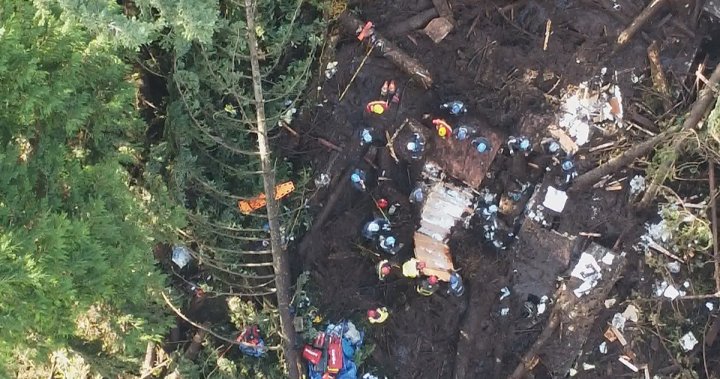The recent landslide tragedy in Lions Bay, British Columbia, which claimed one life and left another person missing, underscores the urgent need for enhanced landslide risk management in the province. This incident, occurring less than two months after a similar fatality in Coquitlam and following the devastating Highway 99 mudslide in 2021 that killed five, highlights a concerning pattern of landslide-related deaths and destruction. These events, combined with the extensive damage to infrastructure, necessitate a renewed focus on proactive measures to mitigate such risks. Experts are calling for a comprehensive reassessment of vulnerable areas and the implementation of stronger preventative measures.
Professor John Clague, a renowned earth sciences expert at Simon Fraser University, advocates for increased government efforts in surveying and monitoring the stability of steep slopes, particularly in populated areas and along transportation corridors. While acknowledging the substantial investments already made by the province in slope stabilization, Clague emphasizes the vulnerability of older properties, potentially built without adequate consideration of landslide risks. He proposes a large-scale initiative to identify high-risk locations and implement appropriate mitigation strategies. This proactive approach, he argues, is crucial for protecting lives and minimizing the devastating consequences of future landslides.
Transportation Minister Mike Farnworth points to the province’s increased focus on monitoring roads, particularly after recent atmospheric rivers and wildfires, which can destabilize slopes. He highlights the use of advanced technologies like LiDAR (Light Detection and Ranging) to gain detailed insights into slope conditions and floodplains. Farnworth asserts the province’s commitment to addressing these geological hazards, emphasizing ongoing and future investments in these critical areas. However, critics like Clague argue that these efforts need to be significantly expanded and accelerated given the escalating frequency and severity of extreme weather events.
Clague recommends deploying more geotechnical engineers to conduct thorough assessments of potentially hazardous areas and identify “triage sites” where immediate action may be required to protect lives and property. This involves prioritizing locations based on risk levels and implementing targeted interventions, ranging from early warning systems to structural reinforcement or even relocation in extreme cases. This proactive approach would enable a more efficient allocation of resources and a more effective response to imminent threats.
The Lions Bay incident also raises questions about the utilization of existing risk assessments. A 2018 report commissioned by the municipality examined coastal, creek, and hillslope hazards, but its impact on subsequent planning and mitigation efforts remains unclear. Mayor Ken Berry acknowledges the inherent risks of living in a mountainous coastal community but emphasizes the current focus on recovery efforts. A thorough review of the 2018 report and its recommendations is crucial to understand whether opportunities for preventative action were missed and to inform future risk management strategies.
The recurring nature of these tragedies necessitates a comprehensive and multi-faceted approach to landslide risk management in British Columbia. This involves not only increased monitoring and geotechnical assessments but also a reassessment of building codes and land-use planning in high-risk areas. Integrating the latest scientific understanding of landslide dynamics with effective public awareness campaigns and emergency preparedness protocols is crucial for building more resilient communities and minimizing the impact of these devastating natural events. The province must prioritize a proactive approach that anticipates and mitigates risks rather than reacting to disasters after they occur.

